Featured image copyright: Russian 3M22 Zircon Hypersonic Cruise Missile; Land-, Air-, and Submarine-Mobile © Nrf
When I was at primary school, some of the boys in my class used to play a fairly disgusting game in our roofless and chilly outside toilet block. It involved seeing who could reach the highest; I’ll let you work out with what. I must apologise here to any ladies reading this; little boys always were and always will be revolting creatures. Many ladies would say that we don’t change much as we grow older, either. In many ways this game of pointless boasting was simply a continuation, but without the aid of playing cards, of a game that had been played in the 16th century and even earlier, and is most often referred to as primero, primiero or primo visto. Something very similar was probably played in palæolithic times with rocks and mammoth bones. The playing card version was included in a number of paintings, such as The Card Players by Lucas van Leyden, in 1510, and also it’s claimed to be featured in an Elizabethan card party painted by Federico Zuccari, in which Lord Burleigh can be seen playing against three other “gentlemen of distinction”, although all except he remain unidentified. The cards are slightly different in surviving paintings, being longer and narrower than the type we use today, but the jack of hearts and the ace can clearly be seen, as well as the 6 and 7 of clubs. Even earlier, England’s King Henry VII (reigned 1485-1509 and appears as the heroic Richmond in Shakespeare’s Richard III) seems to have lost quite a lot of money at it, according to Treasury records. It was, of course, a gambling game and may even be an ancestor of poker. It was certainly an ancestor of the game identified by the writer on the rules of card games, Edmond Hoyle, as brag.
As schoolboys, we may have played brag in a rather vulgar way (we were caned for such naughty behaviour in those days if we were caught), whereas the Elizabethan card players played it with cards. Vladimir Putin, President of the Russian Federation, now plays brag with intercontinental ballistic missiles. That’s a REAL boast, but it has its roots in similar games of showing off and proving oneself the biggest kid in the playground. In three-card brag, the commonest form of the card game and described by the 18th century English writer on card game rules that I mentioned earlier, Edmond Hoyle, everyone must put money into the pot right at the start. It’s called the “ante” and can be increased by a player who thinks he (or she) has got good cards. That’s known as “upping the ante”, which is what Putin has clearly done. He has test-launched two different types of new missile, in addition to one already capable of taking out Western satellites. The largest missile, the hypersonic Tsirkon (or Zircon), is the fastest cruise missile in the world, capable of reaching Mach 8 (more than 9,600 kilometres per hour) and also, most importantly, of targeting cities anywhere in the United States and, of course, western Europe. Indeed, this missile has already been identified on state-controlled Russian TV as Putin’s “weapon of choice” for attacking the US. That’s in addition to the submarine launched Bulava, of which more later.
It means that President-Elect Joe Biden will have an urgent task ahead (once he’s been allowed to move into the White House) to get a new Strategic Arms Reduction Treaty (START) signed without delay.


The existing Treaty comes up for renewal in early February 2021, just sixteen days after Biden’s planned inauguration. It won’t be easy: both George W. Bush and Donald Trump, during their presidencies, withdrew from nuclear arms agreements with Russia. Only what’s known as New START survives as a means of limiting nuclear arsenals. At one point, under Trump, the US insisted that China should be included in the negotiations, an idea that did not meet with Moscow’s approval. It wasn’t liked by Beijing, either, because China has only a tiny number of missiles compared with the US and Russia. In any case, Trump’s former advisor on national security, the hawkish John Bolton, was opposed to limitations of any kind on the numbers or types of missiles. As it is, Biden won’t have time to negotiate for anything other than an extension to New START, if he’s lucky, although Putin has indicated a willingness to extend the deal without preconditions. He has also – albeit not until 15 December – congratulated Biden on his win and stated that he ‘looked forward’ to dealing with him. Trump’s attempts to retain the White House after losing the election haven’t improved the chances of a deal being done in time. It’s claimed that Trump was reluctant to agree to New START simply because the existing version had been signed by his predecessor, Barack Obama. Clearly, we’re back to the playground again.
Not surprisingly, Putin wants to prove he can shoot higher and more forcefully than anyone else (which was very much the intention of my schoolboy colleagues, in fact), and that is why he recently ordered the Vladimir Monomakh submarine of the Pacific Fleet to launch four Bulava cruise missiles, one after another in quick succession.
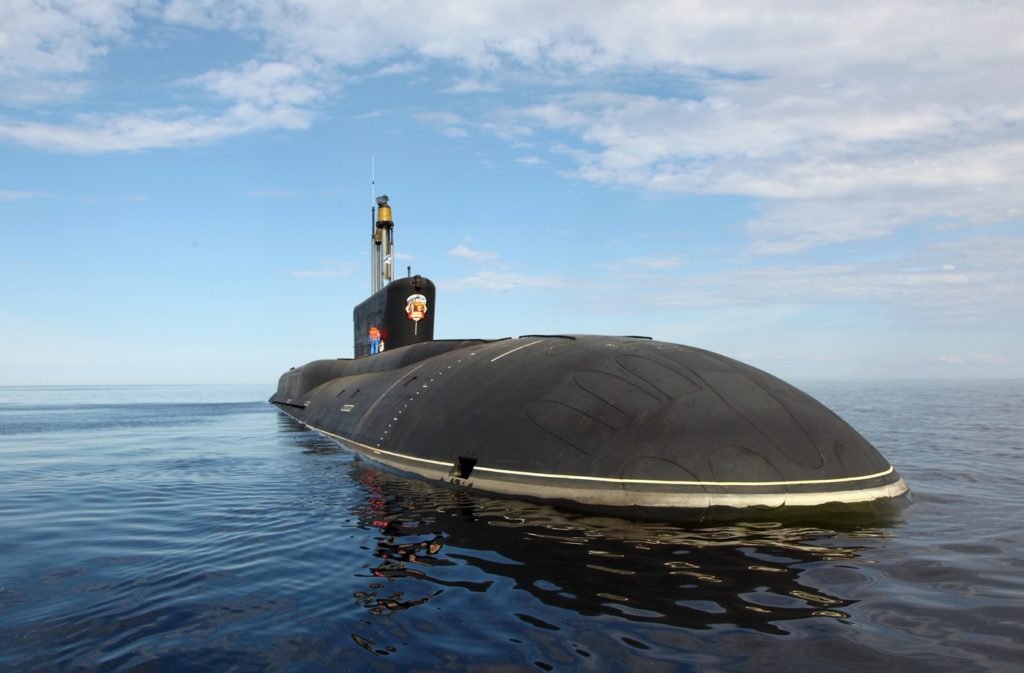
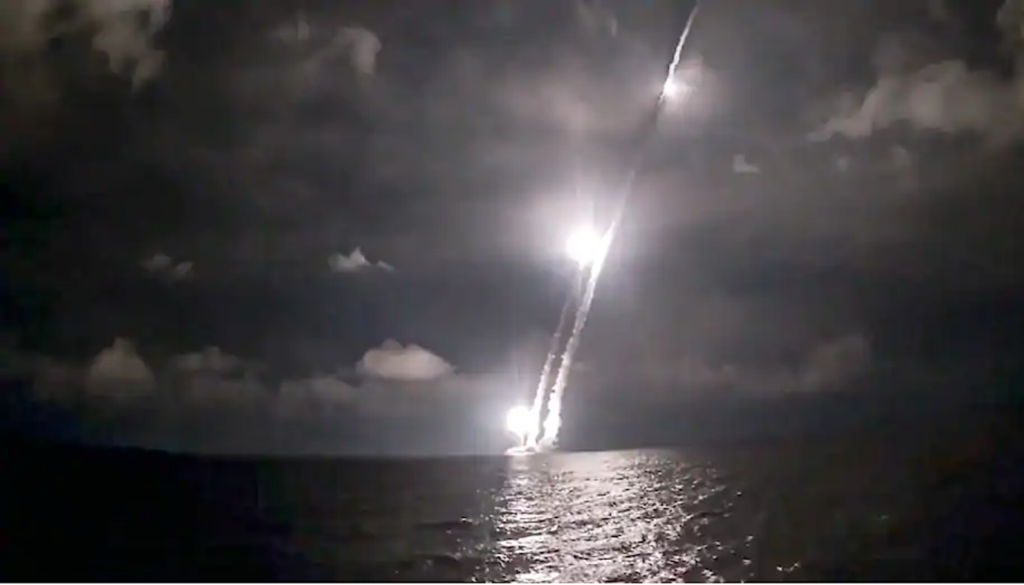
They were fired from underwater in the Sea of Okhotsk, close to Russia’s Kamchatka Peninsula, according to Russia’s Defence Ministry. That’s not very far from Japan, or even Alaska, of course. The missiles, which had dummy warheads, hit their targets in the Arkhangelsk region of north-western Russia, 5,500 kilometres away. That’s fairly convincing shooting. The Vladimir Monomakh is one of the new Borei-class of nuclear submarines, each of which carries 16 Bulava missiles. They will represent the naval component of Russia’s nuclear forces for the decades ahead. The SS-N-30 Bulava, which means “mace” in Russian, has an operational range of 8,000, possibly even 9,000 kilometres and is the cornerstone of Russia’s nuclear arsenal. It is a 2-stage rocket with two solid fuel boosters and a liquid-fuelled top stage. It can carry 10 warheads, each with a payload of 150 kilotons, making the overall missile 50 or 60 times more powerful than the bomb dropped on Hiroshima. The Bulava and the Borei-class submarines are the most expensive element of Russia’s nuclear forces. According to the Missile Defence Advocacy Alliance (MDAA), “the boost phase has an accelerated ascent as a countermeasure to protect against potential anti-missile systems,” making it hard to take out before it delivers its deadly load. And as if that were not enough, the missile can also come equipped with targeting decoys and is capable of evasive manoeuvres during the terminal phase to avoid missile intercept.” Once you see one coming, in other words, it’s too late to duck.
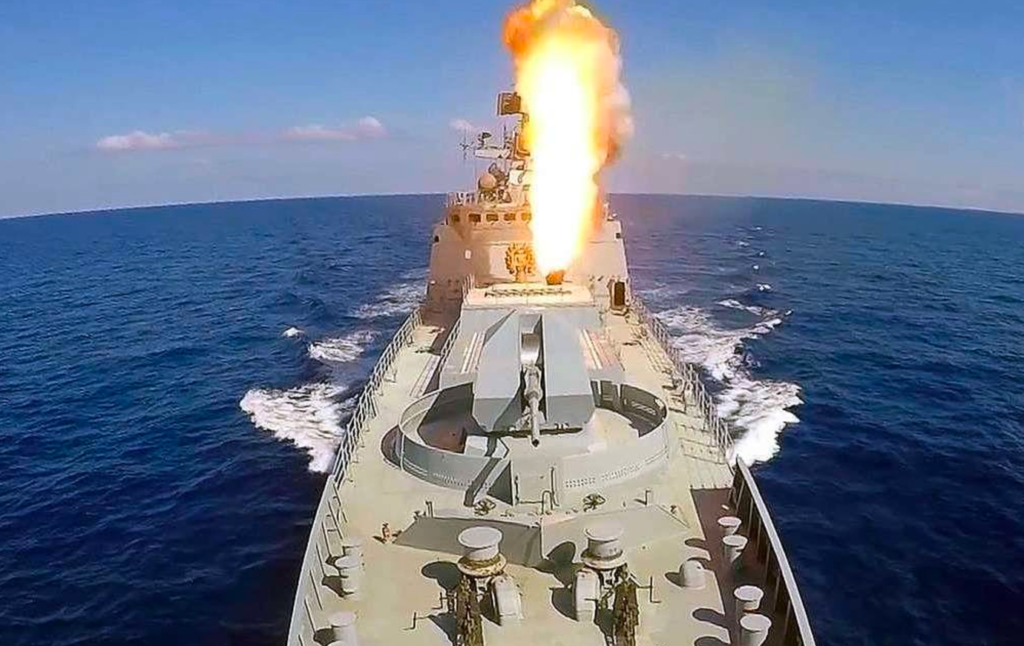
The Tsirkon, on the other hand, is launched from surface vessels. In the latest test, it was launched at night from the Northern Fleet’s Admiral Gorshkov frigate in the White Sea. It successfully hit a ground target in the northern Urals more than 500 kilometers to the east. That’s a thinly-populated area but the target cannot have been very far from Yekaterinburg and Perm. The Moscow Times reports that “Putin has warned that Russia would be forced to deploy hypersonic nuclear missiles on submarines near U.S. waters in response to arms-control tensions. Washington waved off Putin’s warnings as disingenuous propaganda.” Still, it might mean Biden has a better chance of getting a New START deal.
MINE ARE BIGGER THAN YOURS
On its website, the Defense Intelligence Ballistic Missile Analysis Committee warns that Russia is not the West’s only concern. “Over 20 countries have ballistic missile systems, and missiles likely will be a threat in future conflicts involving US forces,” it claims, reminding readers that “ballistic missiles have been used in several conflicts over the last 30 years, including the Iran-Iraq war, the Afghan civil war, the war in Yemen, the 1991 and 2003 Persian Gulf conflicts, the Russian military actions in Chechnya and Georgia, and most recently in the conflicts in Syria and the Ukraine. Russia used cruise missiles for the first time during the conflict in Syria.”
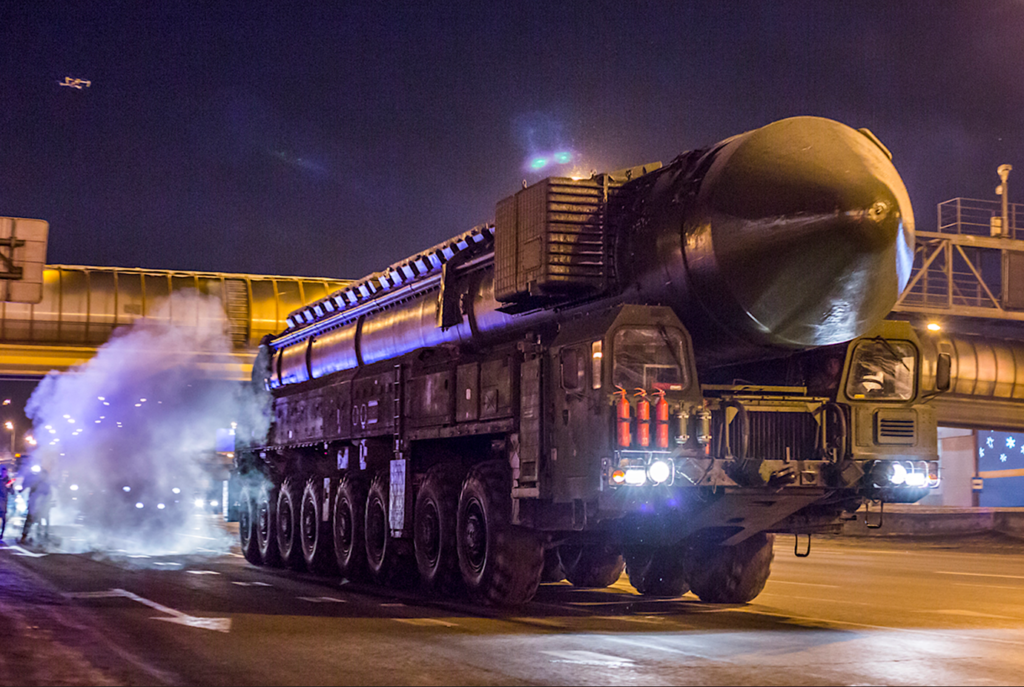
The New START treaty puts restrictions on missile and nuclear arsenals, “limiting each country to no more than 1,550 deployed nuclear warheads and 700 deployed missiles and bombers, and it envisages sweeping on-site inspections to verify compliance”. To be quite honest, that’s still an awful lot of missiles and warheads to have pointed at you, especially as they are getting ever-more powerful. The Bulava itself is seen as the pinnacle of Russian missile development (even more than the Tzirkon, it seems, in terms of bragging rights). It combines the devastating firepower of the SS-27 Topol-M land-based missile with the manoeuvrability of being launched from a submarine. Its range is slightly less than that of the land-based version but it makes up for that by being capable of being launched from anywhere in the world. Naval Technology.com reports that “the missile is 12.1m long and has a diameter of 2.1m (including the launch container). It weighs a total of 36.8 metric tonnes and is capable of carrying six to ten re-entry vehicles with a yield of 100kt-150kt each.”
The Borei-class nuclear-powered submarines are smaller that the Typhoon submarines they replace and have a smaller complement of crew, 107 instead of 130.
They are said to be much quieter than either Russia’s own Akula class submarines or America’s Virginia class submarines. The final built design of the Borei-A has a normal displacement of 13,000 tons, a length of 160 meters, a beam of 12 meters and a draft of 8 meters. Its top speed while submerged is 20 knots (37 kilometres per hour), with a maximum operating depth of 300 meters.
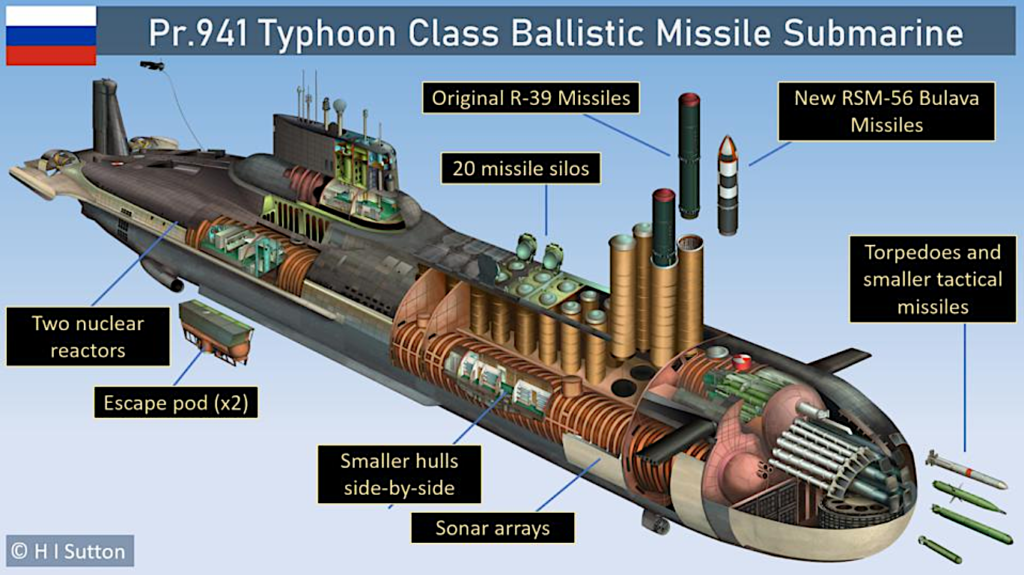
Russia intends to honour two of its World War II heroes later in the decade by naming one Borei submarine Marshall Zhukov in 2026 and giving another one the name Marshal Rokossovsky the following year. Both men were committed Communists, with Rokossovsky recorded as being the more benign of the two, so I’m not sure they would have approved of today’s more capitalist and right-wing Russia, however unswervingly patriotic they both were.
But the Bulava and the Borei, these two formidable weapons, are not the end of Russia’s new missile story. Russia has also been looking closely at combat by attacking and destroying the west’s satellites. Two Direct Ascent Anti Satellite (DA-ASAT) missiles have been tested during 2020, apparently designed to attack satellites in low-Earth orbit. This follows an incident in which Russian satellites were observed ‘following’ a US satellite and edging closer to it, likened to ‘stalking’ at the time, as if with intent to attack it in some way. In fact Russia’s Cosmos 2543, a supposed “inspection” satellite, was said to be “loitering” around USA 245, an American spy satellite, getting to between 150 and 200 kilometres from it. The orbit of the American satellite was adjusted to increase the distance but Cosmos 2543 adjusted its own orbit to match. Cosmos 2543 was injected into orbit from another satellite, Cosmos 2542, launched in November 2019 aboard a Soyuz-2.1 v launcher from the Plesetsk Cosmodrome. Russia stated that Cosmos 2542 could monitor other satellites and take images of the Earth. But Cosmos 2543, which was launched from Cosmos 2542, itself released something that the Americans dubbed Object 45915 and which looked to them like an anti-satellite weapon, being fast enough to destroy a satellite through kinetic impact. In other words, by bumping into it at high speed.

Not very sophisticated, perhaps, but remarkably effective. Confusing, isn’t it? Of course, it was back in 2014 that Russia designated space as a future “war fighting domain”. What was it NASA wrote on the Apollo 11 lander that was left on the Moon? Oh, yes: “we came in peace for all mankind”. Perhaps, back then in the late 1960s, we really did? Or hoped we did.
The actions of Cosmos 2542, Cosmos 2543 and Object 45915 were described by US Space Force commander General John “Jay” Raymond as “unusual and disturbing.” The wandering satellite and “object” did eventually move to other orbits but left a worry for Washington. “Russia’s DA-ASAT test provides yet another example that the threats to U.S. and allied space systems are real, serious and growing,” said Raymond in a statement. “The United States is ready and committed to deterring aggression and defending the nation, our allies and U.S. interests from hostile acts in space.”

Of course, several nations, not just Russia, have looked with interest at the possibility of putting weapons in space. As the Space.com website points out: “With so many satellites orbiting the Earth, how hard would it be to outfit one with a weapon ready to fire at the Earth, or other satellites, as needs dictated?” Would anyone do that? Of course they would. “While such a concept would go against agreements such as the Outer Space Treaty, which bans weapons of mass destruction in orbit, a few military organizations have discussed it in recent years by.” Again, of course they have.
Satellites with peaceful purposes are more important to the West than to Russia or China. We have allowed ourselves in Europe and the United States to develop a dependency that must make them tempting targets not just for the West’s obvious rivals but also for smaller states with big ambitions, although their ability to disrupt may be limited and would come at a very high cost in terms of the inevitable retaliation. The West needs satellites for relaying television signals, live news reports, traffic news, telephones, navigation, credit card payments, banking services, financial markets, weather reports, climate and environmental monitoring, and a host of other activities connected with safety, land stewardship, development and scientific research. We all rely on them every day without giving them a second thought.
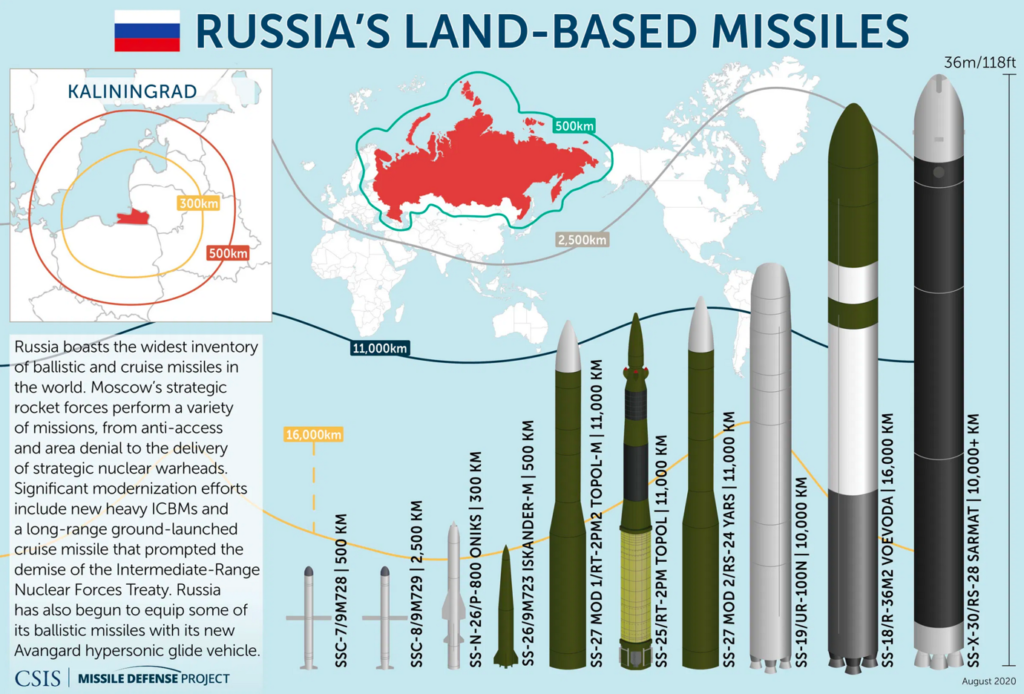
As USAF Major Jeffrey L. Caton, who worked at the Space Standardization and Evaluation Division, Cheyenne Mountain Operations Center, U.S. Space Command warned several years ago: “An attack on our space assets could impact every element of national power political, diplomatic, economic, and military. During conflict, a priority of any commander is to prepare the battlespace for combat operations that is, to ‘stack the deck’ to his advantage. An enemy has much to gain by exploiting the dependency link between our terrestrial forces and force-enhancing space systems. An assault on U.S. military space systems is a force multiplier for an enemy.” So we need to think hard about the testing of anti-satellite missiles and also of ‘stalking’ by Russian satellites (and mysterious ‘objects’). Of course, it’s arguable that not many nations have the capability to knock out satellite systems. Major Caton was concerned that they could still do a lot of damage, given our dependence on space. “The permanent damage to satellites may introduce secondary damage mechanisms that would benefit an enemy,” he wrote. “Even though space is vast, many of the useful orbits to support given areas on earth are heavily populated by satellites. This ‘bunching’ could allow secondary satellite kills through debris fratricide. This could have a cascading effect as new collisions create more debris. The bottom line is that an enemy need not possess space forces to be a space threat.”
KEEP TALKING, NOT FEUDING
It was the Russians who launched the very first satellite, Sputnik, in 1957. The Americans tried and failed to follow suit immediately afterwards. At my primary school (again) I remember a joke song being passed around based on the 1957 Perry Como hit, ‘Catch a Falling Star’, which had been written by Paul Vance and Lee Pockriss (obviously not including the last two lines shown here). Our version went like this:
“Catch a falling star and put it in your pocket,
Never let it fade away.
If you catch a Sputnik put it in a matchbox,
Send it to the USA.”
The Americans more than caught up, though, with the first telecommunications satellite, Telstar, in 1962, also made famous in a hit recording by the Tornadoes. It caused a lot of excitement at the time. I can remember the first live broadcast of a short burst of a baseball game from New York, shown on UK television.
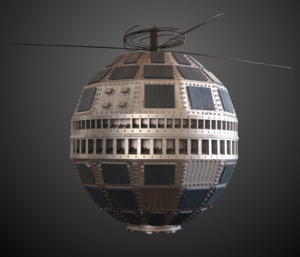
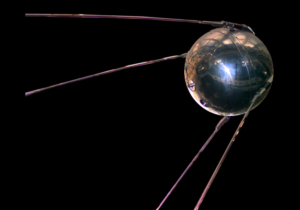
It had to be a short burst because Telstar was not in in a geostationary orbit that allowed it to stay in one place relative to the Earth. Viewers heard New York spectators being told over the public address system that the game was being watched in France and the UK (it was claimed that the Queen was watching, too, and being the novelty it was that may have been true) and the crowd cheered enthusiastically, I recall. I rather wished I could have been there. That, somehow, seemed more significant than Sputnik, which orbited the Earth going “bleep” for three weeks until its batteries ran out and it sank slowly, only to burn up in the atmosphere two months later. The first television pictures sent via Telstar were much more clearly received in France than in the UK, where Post Office engineers had fitted a component at the Goonhilly Downs receiving station the wrong way round. The second attempt was much more successful, once the error had been put right. Telstar itself failed the following year, a victim possibly of the charged particles in the Van Allen belt (although atmospheric tests of an American nuclear device may also have played a part).
Western satellites far outnumber Russia’s meagre tally. The US depends on its satellites for a host of everyday things, but it depends more than any other country on its military satellites. Circling the earth as they do in predictable orbits, very often visible from Earth through moderate telescopes, these vital assets have been described as ‘sitting ducks’. Almost impossible to defend, it means that a space war, if it came, would be “offense-dominant”, to use the military jargon. No-one in the West is privy to the intentions of Cosmos 2542 and its kin, although most observers think it was doing what Russian jets do when they infringe territorial airspace, or what Russian trawlers do when they sit near Western military ships. They are just watching, checking responses and trying to be as annoying as possible. Laura Grego, an astrophysicist who studies space technology, is at the Union of Concerned Scientists, a non-profit organisation, and she wants an international agreement to prevent war in space. “So far negotiations are stalled in international politics,” reports Scientific American on Grego’s aims and ambitions. “Diplomats never work fast,” Grego says, “but right now they are ‘splashing around in a puddle of diplomacy’ without getting much done .” I’m sure diplomats can work quickly when they have to.

GOING UP
Perhaps the inexplicable behaviour of Cosmos 2542, Cosmos 2543 and Object 45915 may give those diplomats a prod towards a more focused approach. War in space is no longer something to talk about and plan for in the private conviction that it won’t happen, or at least that it won’t happen any time soon, like arguing over how many angels can dance on the head of a pin (assuming they wanted to, were incredibly small and – in contradiction to what ancient religious texts suggest – actually enjoy dancing). Now war in space IS happening, so get on with it. As of early November there were very nearly 3,000 active satellites of various types circling the Earth at various altitudes, depending on type. By far the greatest majority of them were American, mostly in low Earth orbit, which means below 2,000 kilometres, and including satellite X-37B, a smaller, unmanned version of the Space Shuttle which, according to Scientific American, “does generally secret things, including emitting subsatellites”, a bit like Cosmos 2542 and Cosmos 2543. It all gets very mysterious at this point, the article continues. “What these subsatellites can do that parent satellites cannot is also secret and therefore unclear.” The real Space Station and the Hubble Space Telescope are in low Earth orbit. At the next distance up is what’s called Medium Earth Orbit, stretching from 2,000 to 35,786 kilometres. There are not as many satellites in this range but most of them are involved in defence activities, whoever owns them. The US, Russia and China hold the lion’s share. The upper limit of this range – 35,786 kilometres – is the geosynchronous (or geostationary, if you prefer) orbit. This is a much busier range, containing mainly (but far from exclusively) communications satellite, some of them military. There are just a few navigation satellites there, all of them defence-related and all of them apparently Chinese.

In this image taken June 16, 2020, and released by the North American Aerospace Defense Command, a Russian Tu-95 bomber (top) is intercepted by a U.S. F-22 Raptor fighter off the coast of Alaska. Russian nuclear-capable strategic bombers have flown near Alaska on a mission demonstrating the military’s long-range strike capability. © North American Aerospace Defense Command
Above the geosynchronous orbit are a range of other satellites, some in highly elliptical orbits that allow them to concentrate their attention on a single hemisphere. The US and Russia each have a few, mainly military. In addition to Earth orbits, there are the so-called Lagrange Points, These are known as L1, L2, L3, L4 and L5, where the gravitational pulls of small objects are balanced between those of the Earth and the Sun. The L1, L2 and L3 points are not permanently stable but L1 and L2 can be used by space scientists. L3 is permanently behind the sun, so not very useful. L1, for instance, is home to the European Space Agency’s Planck satellite and it’s where NASA will put the James Webb Space Telescope.

As the Goddard Space Flight Centre assures us, “it will be the largest, most powerful and complex space telescope ever built and launched into space. It will fundamentally alter our understanding of the universe.” L2 was home to the WMAP satellite (NASA’s Wilkinson Microwave Anisotropy Probe) that successfully helped to map the Cosmic Background Radiation and is currently home to ESA’s Gaia probe. There are no defence-related instruments anywhere nearby as far as we know.
With so much technology flying around up there it’s surprising there are not more accidents, but space is, of course, vast, so there is less chance of a collision, even if the satellites themselves are travelling quite fast. It can happen, however, and the consequences of a collision are worrying: debris flies at eye-watering speeds and can inflict enormous damage in the event of a collision. Something the size of a pinhead could inflict terrible damage, with or without a complement of dancing angels. Timothy Wright, Programme Administrator for Defence and Military Analysis at the International Institute for Strategic Studies (IISS) points out that China’s 2007 anti-satellite test resulted in around 3,000 trackable pieces of orbital debris. There are official designations that suggest a certain degree of cynicism about things that go wrong, such as RUD (rapid unplanned disassembly) and IOBM, which stands for In Oceans by Mistake.
It would clearly be wrong to believe that only one participant is engaged in space research for military ends, but certainly Russia’s latest efforts in the eternal game of shoot-’em-up brag are impressive.


Russia is slightly more cagey about its DA-ASAT missiles, or extra-terrestrial interceptor missiles than it is about its ICBMs and cruise missiles. John Raymond, Commander of the United States Space Command, said that such weapons pose a challenge to US interests in space, being capable of destroying satellites in low earth orbit. Russia is developing a mobile long-range extra-terrestrial interceptor missile called the 14Ts033 Nudol (also as the PL-19 Nudol system). On Euroweeklynews.com’s website, the successful test launch was reported as follows: “Defence Ministry reports from The Kremlin are claiming Russia has successfully launched a new ‘Star Wars’ style ballistic missile, from their Sary-Shagan test site in Kazakhstan, capable of a speed of 9000mph (14,500 kph) and can easily blast other satellites out of space.” Ostensibly developed to protect Moscow from missile attack, the 14Ts033 Nudol is capable of Mach 12 speeds, and has a range of 620 miles (1,000 kilometres), as part of Moscow’s A-235 missile defence system.
Nudol, however, is a two-stage solid fuel rocket which is stored in a sealed transport-launch container, and in a combat position located in a special silo. They are capable of intercepting nuclear warheads and advanced hypersonic aircraft in the near space and the stratosphere, but their primary aim is to knock out satellites.
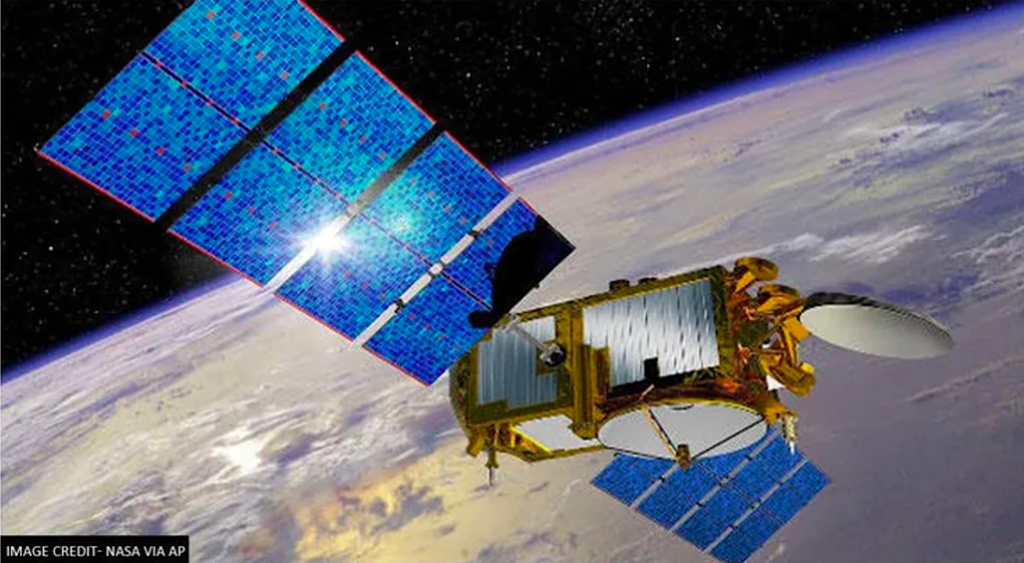
This is in addition to what it did with Cosmos 2542 did and clearly can do again. “At Russia’s Sary-Shagan training ground in the Republic of Kazakhstan, the combat crew of the air and anti-missile defence forces of the Aerospace Forces successfully carried out the next test launch of a new missile of the Russian anti-missile defence system,” the Russian Defence Ministry said on its website. The actual type of missile involved was not named but is assumed to have been the 14Ts033 Nudol. As reported on the Defense World Net website, the Defence Ministry statement continued: “‘After a series of tests, the new anti-missile missile system of the ABM system has reliably confirmed the inherent characteristics, and the combat crews successfully completed the task, hitting the conditional target with the specified accuracy,’ said Major General Sergei Grabchuk, commander of the anti-missile defence of the Aerospace Forces.” The Irish web news service Nova reported: “Andrey Dyomin, Commander of the 1st Air and Missile Defence Army of the Russian aerospace forces has claimed that the new missile ‘has reliably confirmed its characteristics in a series of tests.’”
HOLDING A PRIAL
Russia has now joined China as the only nations with strategic space warfare weapons – at least, that we know about. China has also conducted a test flight of its anti-satellite missile, the Dong Neng-3 direct ascent missile. According to GlobalSecurity.org, “Analysts said anti-satellite missiles could cripple US intelligence, navigation, and communications capabilities that are critical for both military operations and civilian infrastructure.” Star Wars doesn’t seem so glamourous up close and personal, especially without Luke Skywalker, Obi-Wan Kenobi and Yoda. Whether you prefer Putin to Darth Vader is a matter of personal choice; just don’t try to attack him with a light sabre.
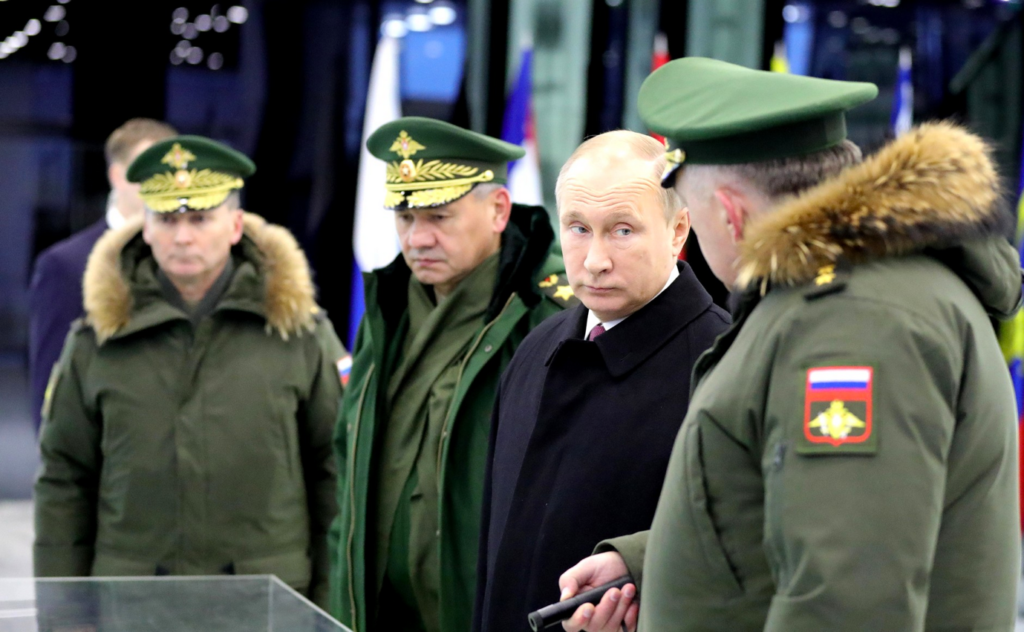
Of course, in addition to this new potential Russian satellite-killer missile, there are also the missiles that Putin showed off more publicly: the hypersonic Tzircon cruise missile and the multi-warhead submarine-launched Bulava. The launches of the two large missiles “wrapped up” the large-scale drills of Russia’s strategic nuclear forces, Putin was told. We do know that all the missiles are claimed to have hit their targets and that they have made Washington nervous. The game of brag, of course, grows as other players “up the ante” and boast of their latest advances. One rather over-the-top report on Putin’s latest missiles suggested that he is “ready to trigger Armageddon”. This seems unlikely. In a game of brag, the other players also have their cards. And when you’re playing with missiles instead, it seems probable that no-one wants to win just so that they can rule over a radioactive wasteland without a surviving and mainly healthy and productive population. The winner has to win in a way that means they have power over the enemy, not that the enemy and his or her land has been obliterated and wiped from the map. No-one ever really won those playground games that I can recall, at least, not for long. It was just showing off and suggesting that one or other little boy had defeated the others on that day. Effectively, whether he realises it or not, that’s what Putin is doing. In the game of brag, a winning hand is the prial, or ‘pair royal’, which, for the moment, would seem to be the hand Putin is holding. He is doing what Hoyle recommended as a tactic in the game of brag all those many years ago: “When in doubt, win the trick”. For the moment, it looks as if he has.

